LGBTQ+ Identities
When it comes to gender and sexual identity, there has been an explosion of labels that some find confusing. Terminology is changing to express a broad spectrum of identities beyond male/female, man/woman, and gay/straight.
Dee
Who is Dee?Hi! I’m here to help you explore the vast spectrum of LGBTQ+ identities. It’s a big world out there, and for a long time, we’ve tried to lump everyone into just a handful of categories: man or woman, gay or straight. We now know it’s more complex than that, factoring in all four core elements: biological sex, gender identity, gender expression and attraction. Let’s get started...
The infinite variety in human identity
For a long time, people have used pairs of opposites to make sense of the world—black or white, nature or nurture, gay or straight, boy or girl. Human beings and the world we inhabit just aren’t that simple.
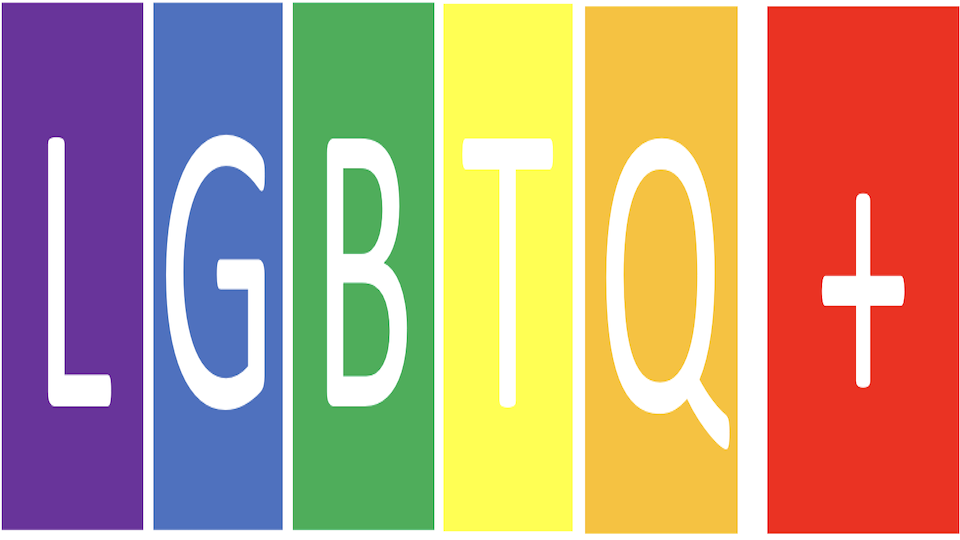
The "+" in LGBTQ+
Explore the history and meaning of the LGBTQ+ acronym.

What’s in a name?
There has been an explosion of terms used to explain gender identity and sexual identity. Learn why some feel many terms are needed.
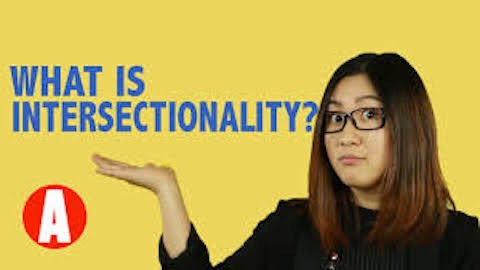
What Is Intersectionality?
If you had just one word to describe yourself, what would it be? That's the challenge posed to Mengjue Jiang. Watch this video to learn her response.

Intersectionality explained
Watch this video to learn more about intersectionality and how it helps us understand different experiences, including experiences of discrimination.
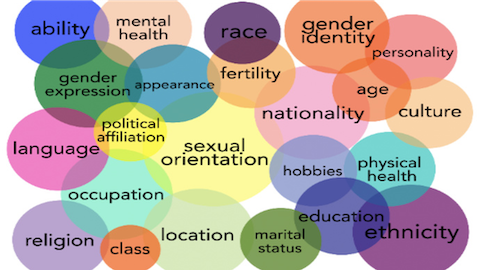
Digging into intersectionality
Get the scoop on the history of intersectionality and why it's at the forefront of efforts to achieve LGBTQ+ equity today.

Double jeopardy
Explore the experiences of Asian American Pacific Islander (AAPI) adults who identify as LGBTQ+, including challenges around safety, security and well-being.
Beyond the binary
The term “non-binary” is used a lot these days. Learn more about identities beyond the categories of man/woman, gay/straight, and male/female.
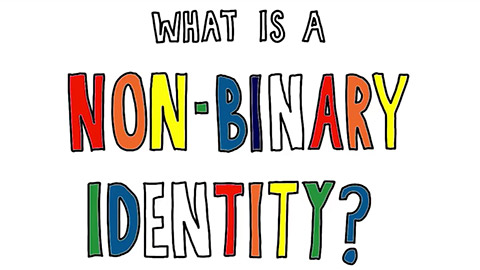
Gender beyond he and she
Nonbinary gender identities have been around for a long time. They have recently begun to be recognized in the US and other western countries.

It’s a learning process for everyone
Actor Asia Kate Dillon talks with Ellen DeGeneres about what it means to be female and nonbinary.
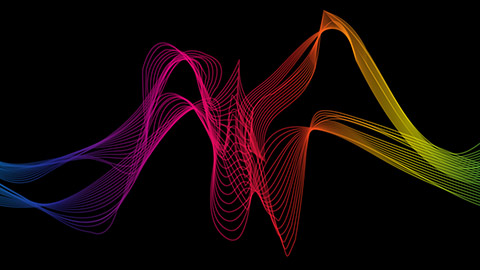
A spectrum of sexual orientations
Researchers have been measuring a spectrum of sexual orientations for over 70 years.
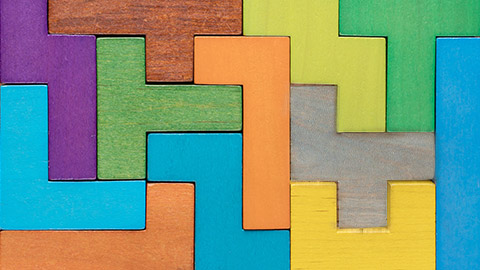
Variety in our bodies
Our bodies come in all shapes and sizes.

The script has flipped
If you ask Gen Z, the future is non-binary.

The "Q" in LGBTQ+
Dig into the many meanings of the word "queer."
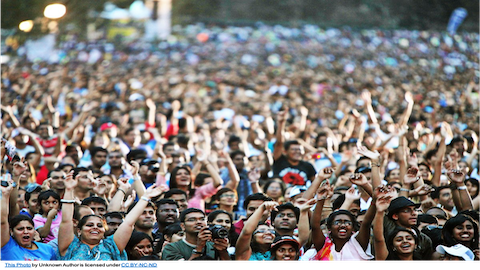
Who identifies as queer?
What was once an offensive term has been reclaimed by some Americans.
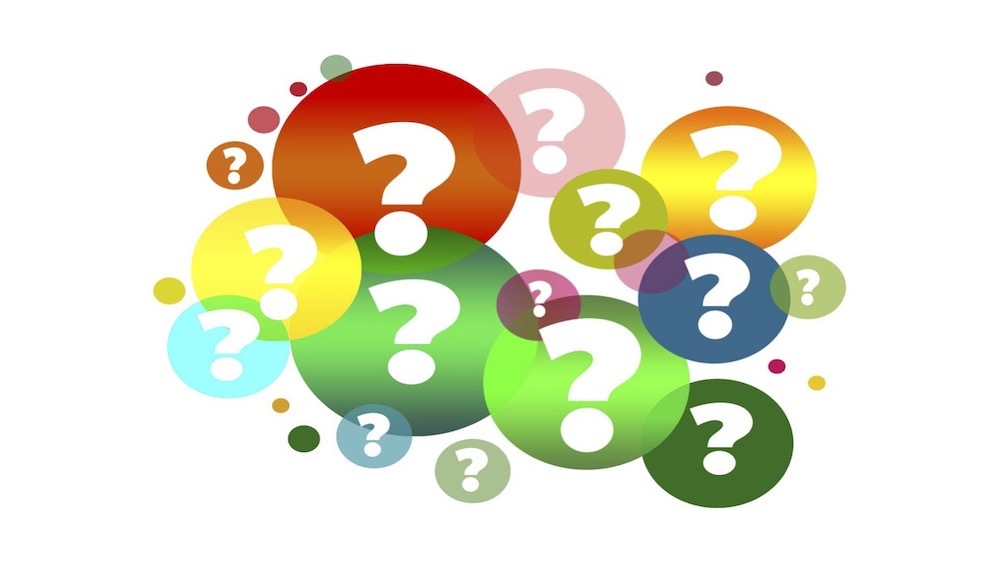
Q is for questioning
Explore a meaning for the "Q" in LGBTQ+ that is often overlooked.

Conflicting opinions
People in the LGBTQ+ community have strong and conflicting opinions on the meaning and use of the term 'queer.'
Love and Family
Explore themes of love and family in the LGBTQ+ community.

Holding fast to love
Six longtime couples share how they weather the ups and downs of life together, finding great joy and opportunities for growth along the way.
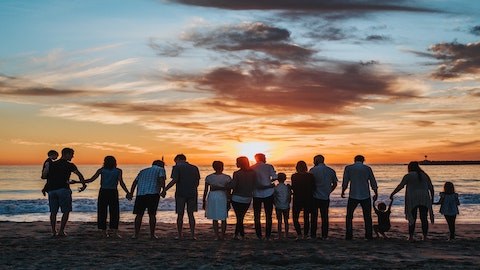
Family Ties
Who do we count on when times are rough--and who do we share our joys and triumphs with? Families are vital to the LGBTQ+ community.
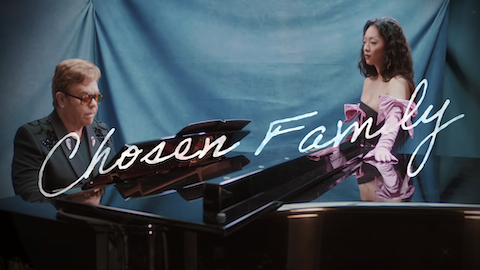
"Chosen Family"
Musical artists Elton John and Rina Sawayama celebrate chosen families in a powerful performance.
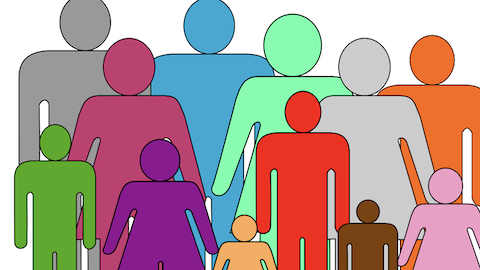
Crucial connections
Chosen families mitigate loneliness and nourish hope in the LGBTQ+ community and beyond.
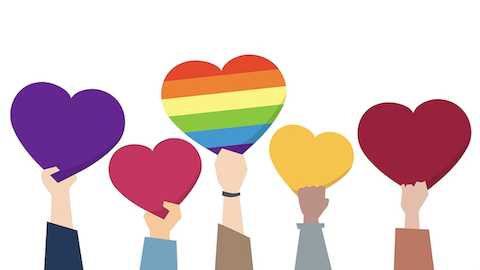
Finding love and support
Learn about the meaning of chosen family for the LGBTQ+ community.
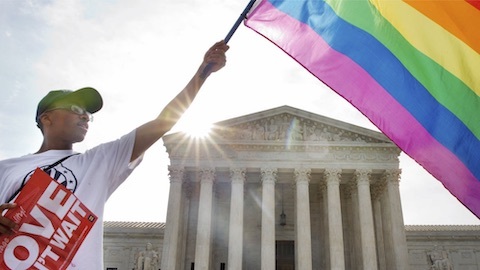
Love and Marriage
Learn how interracial marriage paved the way for same-sex matrimony.
LGBTQ+ History
Explore key themes and milestone events in LGBTQ+ history.
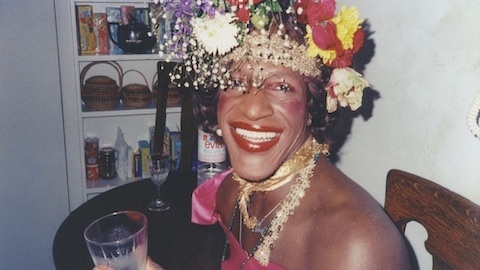
Making History
LGBTQ+ Black pioneers and trail blazers have helped shape our world.
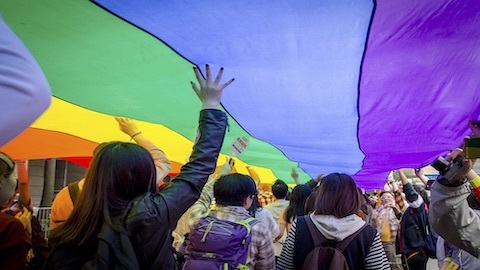
“It’s About Your Rights and Freedom”
Explore the history and meaning of LGBTQ+ Pride celebrations.
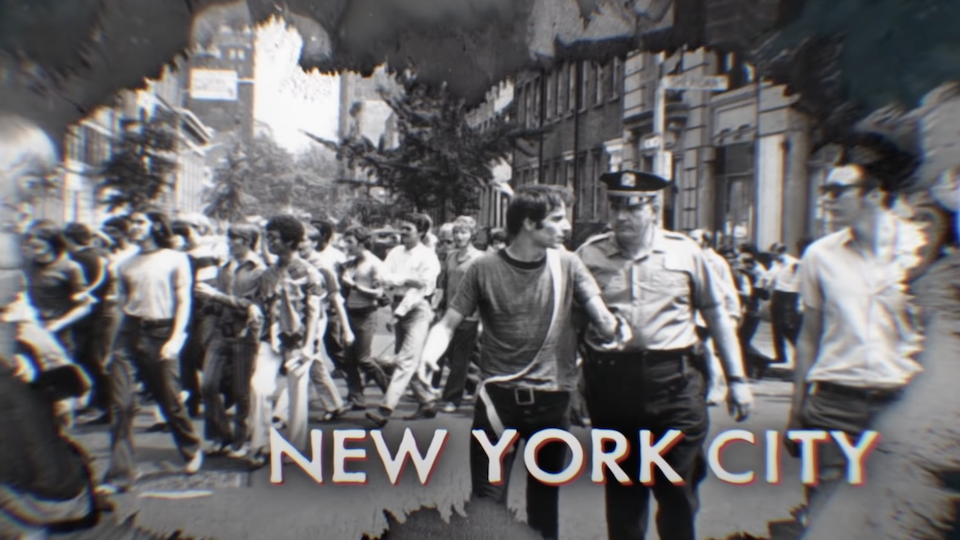
Fighting back
Learn what happened when the patrons of the mafia-owned Stonewall Inn decided to fight back against violence and harassment.
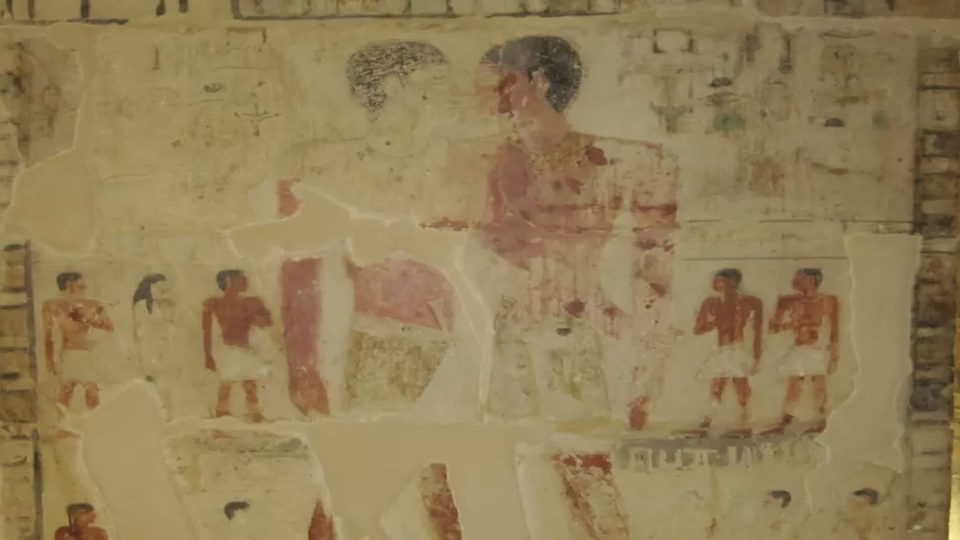
LGBTQ+ history through the ages
Think LGBTQ+ history starts with Stonewall? Think again!
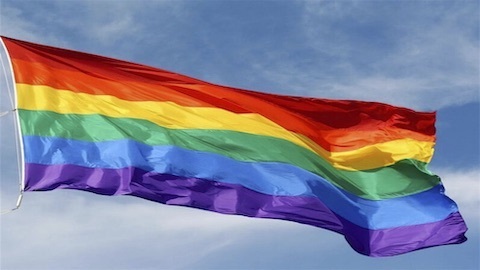
Understanding the Pride flag
Did you know that each of the colors in the rainbow flag has a special significance for the LGBTQ+ community?
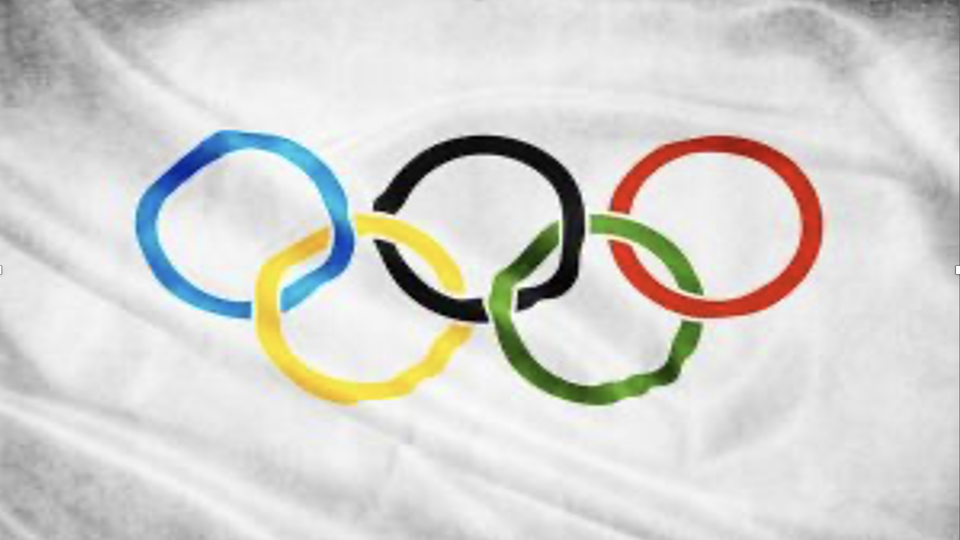
The first Gay Olympics
Learn how an early effort to expand outlets for gay athletes became a smashing success.
Ripple Effects
The LGBTQ+ community faces discrimination on multiple fronts, with significant and lasting impacts.
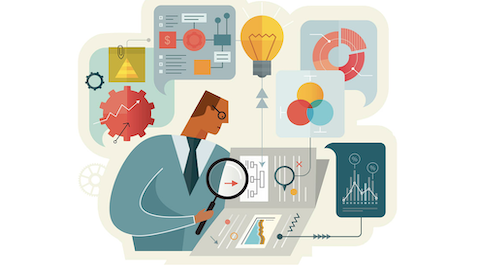
2023--A Year in Review
Explore groundbreaking findings about laws and policies impacting the LGBTQ+ community.
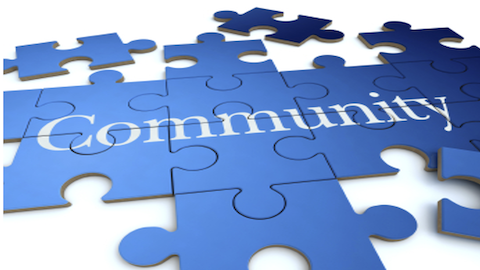
Ripple effects
Our communities are losing some of their most talented residents.
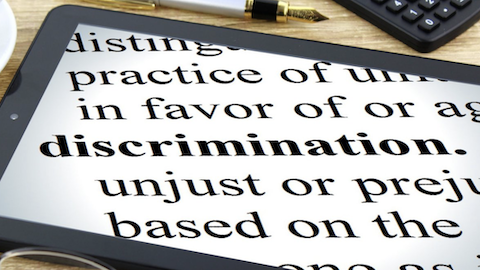
A hard truth
Most people agree that discrimination is wrong. But do we fully understand the harm it creates?

Violent victimization
LGBTQ+ persons are at significantly higher risk of being victims of violent crime than non-LGBTQ+ persons.
LGBTQ+ at Work
Learn about the experiences of LGBTQ+ persons in the workplace.

A changing workplace
Explore changes occurring in today's workplace as more people identify as nonbinary.

LGBTQ+ at work
Learn about the experiences of LGBTQ+ persons in the workplace and what organizations can do to create a more inclusive environment.
Understanding the Community
Learn about the people who make up the LGBTQ+ community.

Why I do this
Nicole Perez recalls a time she didn't stand up for a friend. "I never want to miss an opportunity" again, she says.

Celebrating the ordinary
Amy Schneider's historic run on 'Jeopardy!' won't be forgotten anytime soon, not the least because she made being LGBTQ+ seem so ordinary.
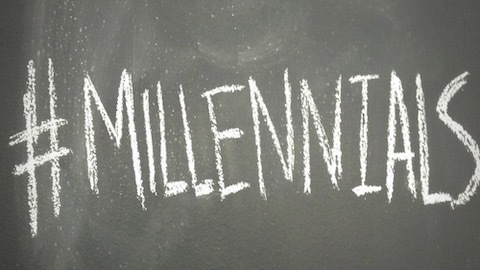
LGBTQ+ millennials
Check out the findings from a 2018 survey of young millennials conducted by researchers at the University of Chicago. Some of the results might surprise you, including the fact that Latinos in this generation are the most likely to identify as LGBTQ+.
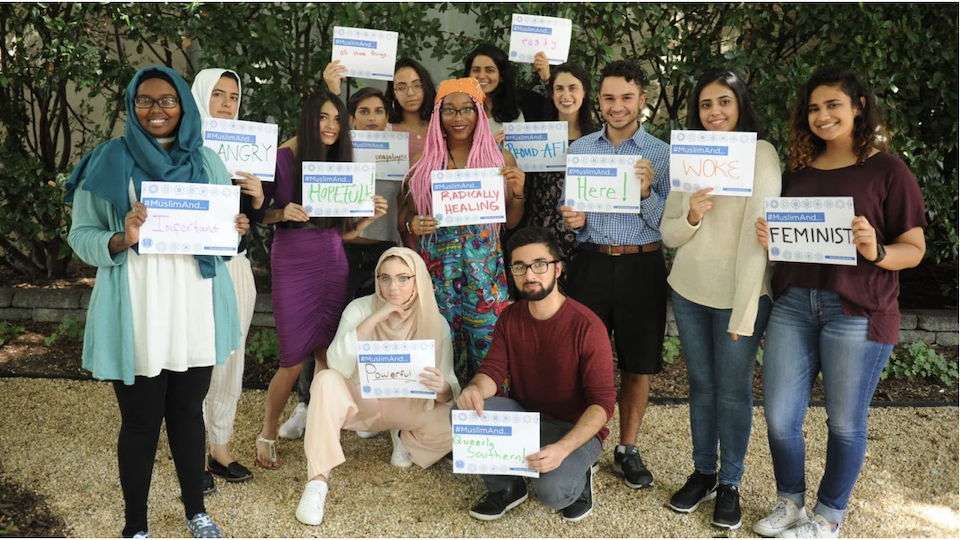
Finding the words
It's not easy to affirm your identity when existing terms are non-existent, stereotypical or offensive. Learn about ongoing efforts to fill the gaps in LGBTQ+ terminology in many Asian languages.
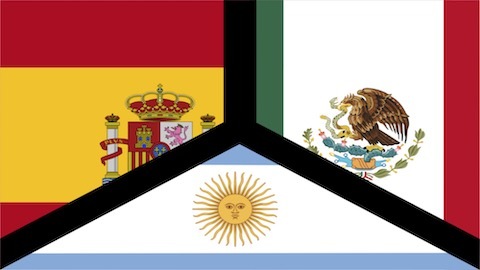
Who identifies as Latinx?
Get the scoop on the meanings and origins of Latinx, a term added to Merriam-Webster's Dictionary in 2018.

By the numbers
How many U.S. adults identify as LGBTQ+? Explore the latest findings from Gallup.

The "+" in LGBTQ+
Explore the history and meaning of the LGBTQ+ acronym.

What’s in a name?
There has been an explosion of terms used to explain gender identity and sexual identity. Learn why some feel many terms are needed.

What Is Intersectionality?
If you had just one word to describe yourself, what would it be? That's the challenge posed to Mengjue Jiang. Watch this video to learn her response.

Intersectionality explained
Watch this video to learn more about intersectionality and how it helps us understand different experiences, including experiences of discrimination.

Digging into intersectionality
Get the scoop on the history of intersectionality and why it's at the forefront of efforts to achieve LGBTQ+ equity today.

Double jeopardy
Explore the experiences of Asian American Pacific Islander (AAPI) adults who identify as LGBTQ+, including challenges around safety, security and well-being.

Gender beyond he and she
Nonbinary gender identities have been around for a long time. They have recently begun to be recognized in the US and other western countries.

It’s a learning process for everyone
Actor Asia Kate Dillon talks with Ellen DeGeneres about what it means to be female and nonbinary.

A spectrum of sexual orientations
Researchers have been measuring a spectrum of sexual orientations for over 70 years.

Variety in our bodies
Our bodies come in all shapes and sizes.

The script has flipped
If you ask Gen Z, the future is non-binary.

The "Q" in LGBTQ+
Dig into the many meanings of the word "queer."

Who identifies as queer?
What was once an offensive term has been reclaimed by some Americans.

Q is for questioning
Explore a meaning for the "Q" in LGBTQ+ that is often overlooked.

Conflicting opinions
People in the LGBTQ+ community have strong and conflicting opinions on the meaning and use of the term 'queer.'

Holding fast to love
Six longtime couples share how they weather the ups and downs of life together, finding great joy and opportunities for growth along the way.

Family Ties
Who do we count on when times are rough--and who do we share our joys and triumphs with? Families are vital to the LGBTQ+ community.

"Chosen Family"
Musical artists Elton John and Rina Sawayama celebrate chosen families in a powerful performance.

Crucial connections
Chosen families mitigate loneliness and nourish hope in the LGBTQ+ community and beyond.

Finding love and support
Learn about the meaning of chosen family for the LGBTQ+ community.

Love and Marriage
Learn how interracial marriage paved the way for same-sex matrimony.

Making History
LGBTQ+ Black pioneers and trail blazers have helped shape our world.

“It’s About Your Rights and Freedom”
Explore the history and meaning of LGBTQ+ Pride celebrations.

Fighting back
Learn what happened when the patrons of the mafia-owned Stonewall Inn decided to fight back against violence and harassment.

LGBTQ+ history through the ages
Think LGBTQ+ history starts with Stonewall? Think again!

Understanding the Pride flag
Did you know that each of the colors in the rainbow flag has a special significance for the LGBTQ+ community?

The first Gay Olympics
Learn how an early effort to expand outlets for gay athletes became a smashing success.

2023--A Year in Review
Explore groundbreaking findings about laws and policies impacting the LGBTQ+ community.

Ripple effects
Our communities are losing some of their most talented residents.

A hard truth
Most people agree that discrimination is wrong. But do we fully understand the harm it creates?

A changing workplace
Explore changes occurring in today's workplace as more people identify as nonbinary.

LGBTQ+ at work
Learn about the experiences of LGBTQ+ persons in the workplace and what organizations can do to create a more inclusive environment.

Why I do this
Nicole Perez recalls a time she didn't stand up for a friend. "I never want to miss an opportunity" again, she says.

Celebrating the ordinary
Amy Schneider's historic run on 'Jeopardy!' won't be forgotten anytime soon, not the least because she made being LGBTQ+ seem so ordinary.

LGBTQ+ millennials
Check out the findings from a 2018 survey of young millennials conducted by researchers at the University of Chicago. Some of the results might surprise you, including the fact that Latinos in this generation are the most likely to identify as LGBTQ+.

Finding the words
It's not easy to affirm your identity when existing terms are non-existent, stereotypical or offensive. Learn about ongoing efforts to fill the gaps in LGBTQ+ terminology in many Asian languages.

Who identifies as Latinx?
Get the scoop on the meanings and origins of Latinx, a term added to Merriam-Webster's Dictionary in 2018.

By the numbers
How many U.S. adults identify as LGBTQ+? Explore the latest findings from Gallup.

Violent victimization
LGBTQ+ persons are at significantly higher risk of being victims of violent crime than non-LGBTQ+ persons.
Glossary
Affirmed Gender
(Noun) A term used to describe a person's gender, based on their innate understanding of themselves -- as opposed to the gender they were assigned at birth. A person can affirm their gender socially (e.g. changing one's pronouns), legally (e.g. legal name change), and/or medically (e.g. gender-affirming surgery). Increasingly used in place of older terms, such as preferred gender or chosen gender. Learn More
Agender
(Adj.) Describes a person who does not identify with any gender. Learn More
Ally
(Noun) An ally is someone who openly supports people in the LGBTQ+ community. Although it usually refers to people who do not identify as LGBTQ+, people within the LGBTQ+ community can be known as allies of other identities within the LGBTQ+ group. Learn More
Asexual
(Adj.) Describes a person who does not experience any form of sexual attraction. People who identify as asexual may or may not experience emotional, physical, or romantic attraction. Asexuality is a sexual orientation distinct from a chosen behavior such as celibacy or sexual abstinence. Learn More
Attraction
(Noun) A feeling of interest in another person. Attraction can take different forms, including sexual, romantic, physical, emotional, and aesthetic attraction. Individuals may experience just one or multiple types of attraction for another person. Learn More
Bigender
(Adj.) A term used to describe a person whose gender identity is a combination of two or more genders or is shifting between two or more genders. Learn More
Bisexual
(Adj.) Refers to the sexual orientation of a person who experiences sexual, romantic, and/or emotional attraction to persons of more than one gender, not necessarily equally or at the same time, in the same way, or to the same degree. Also known as "bi". Distinct from pansexual, which refers to the capacity to be attracted to persons regardless of gender identity. Learn More
Boston Marriage
(Noun) Originated in New England during the late 1800s to describe a situation where two women lived together in a committed relationship. Boston marriages typically occurred between women who were college-educated and financially independent, thereby eliminating the need for male support. Learn More
Cis/Cisgender
(Adj.) A term used to describe an individual whose gender identity aligns with their sex assigned at birth. i.e., a person born with female anatomy who identifies as a girl/woman. Learn More
Culturally Queer
(Adj.) A term coined by people who grew up with LGBTQ+ parents. Used to describe the feeling of being immersed in queer culture, traditions, celebrations, media and language and learning about society through a primarily queer lens.
Deadnaming
(Verb) Occurs when an individual, intentionally or not, refers to the name that a transgender or gender-expansive individual used at a different time in their life. Can also be referred to as birth name, given name or old name. Deadnaming can cause stress, trauma, embarrassment and even danger for trans people. Learn More
Gay
(Adj.) Describes the sexual orientation of persons who are emotionally, sexually, and/or romantically attracted to persons of the same sex/gender. While the term is most often used to describe men, it can also be used more broadly to refer to both men and women (i.e., gay man, gay woman, gay people). Learn More
Gender
(Noun) A social construct used to classify a person as a man, woman, or some other identity and ascribe qualities of masculinity and femininity to people. Gender characteristics can change over time and vary between cultures. Learn More
Gender binary
(Noun) A socially constructed system that defines gender as consisting solely of two categories--masculine/man and feminine/woman. Learn More
Gender Euphoria
(Noun) Describes the feeling of significant right-ness or comfort experienced when a person's gender is recognized and respected by others, when their body aligns with their gender, or when they express themselves in accordance with their gender. Focusing on gender euphoria instead of gender dysphoria shifts focus to the positive aspects of being transgender or gender expansive (see Gender Dysphoria). Learn More
Gender Expansive
(Adj.) An umbrella term used to describe people who do not follow gender stereotypes, or who expand commonly held ideas and norms of gender identity and expression. Gender-expansive people may be cisgender, identify with a mix of genders or not identify with a gender at all (see Agender). Some gender expansive people use gender-neutral pronouns while others do not. It is important to use the terms people use for themselves. Learn More
Gender expression
(Noun) The ways that a person communicates a gender identity to others such as dress, behavior, hairstyle, voice, and/or mannerisms. Learn More
Gender fluid
(Adj.) Describes a person who identifies their gender as shifting within a spectrum of gender identities and expressions. A person who is gender fluid may always feel like a mix of two (or more) genders, but may feel more one gender some days, and another gender other days. Gender-fluid people may or may not also identify as transgender. Learn More
Gender identity
(Noun) One’s deeply held, core sense of being a man, woman, or some other gender. A gender identity can be a combination of two or more genders (such as gender fluid), and some individuals don't identify with any gender at all--described as being agender. May or may not correspond with the sex or gender assigned at birth. Learn More
Gender socialization
(Noun) Refers to the social process that introduces members of a society, such as children, about the social expectations, attitudes and behaviors that are typically associated with girls/women and boys/men. Varies across cultures and is usually taught through parents, teachers, peers, media and faith traditions. Learn More
Gender Spectrum
(Noun) The concept that gender exists along a continuum beyond man/masculine and woman/feminine. Some people may be more aligned with masculine or feminine aspects, some move fluidly along the spectrum, and some exist outside the spectrum entirely. Learn More
Graysexual
(Adj.) Describes someone who rarely experiences sexual attraction. Someone who is graysexual is on the asexual spectrum, meaning they are closely aligned with asexuality. Also known as gray asexuality. Learn More
Gynephilic/Gynosexual
(Adj.) Describes the attraction to females or femininity, regardless of one's own sex or gender identity (i.e., both heterosexual men and lesbian women could be described as gynephilic in their sexual attraction). Typically used within the field of behavioral science. Learn More
Hijra
(Noun) A term used in South Asia, and particularly in India, which refers to a diverse community including individuals who do not identify as men or women as well as persons who identify as women but who were assigned the sex of male at birth. Legally recognized as a third gender today, hijras have been a part of South Asian culture for centuries but have also suffered marginalization and abuse. Term should be used with care, as some within the community consider it to be offensive. Learn More
Homophobia
(Noun) The aversion towards, fear and hatred of, or discomfort towards members of the LGBTQ+ community. Homophobia is often expressed as discrimination, hostility, harassment, and violence. Homophobia often stems from lack of knowledge about LGBTQ+ people and the issues they face and can sometimes be alleviated with education and support. Learn More
House ballroom community
(Noun) Refers to the underground subculture of mainly Black and Latinx LGBTQ+ people who ‘walk’ to earn recognition and awards--as in a pageant--within their community. Most participants in ballroom belong to ‘houses,’ chosen families with which they compete and often live (see Chosen Family). Ballroom is said to originate in New York City in the late 20th century but exists today in various cities across the United States. Learn More
Intergender
(Adj.) Refers to a person who identifies between or as a mix of man/woman. Learn More
Intersectionality
(Noun) A term coined by Kimberlé Crenshaw in the 1980s to describe how social characteristics such as race, ethnicity, gender, sexual orientation, physical ability, and age overlap to shape individual identities and experiences, including experiences of privilege and/or discrimination. Learn More
Intersex
(Adj.) An umbrella term for variations in biological sex traits such as genitalia, hormones, reproductive anatomy or chromosomes. Some of these variations are evident at birth while others manifest during puberty or later in life. An intersex person can be of any gender identity and can also be of any sexual orientation and any romantic orientation. Learn More
Lesbian
(Adj./Noun) Refers to the sexual orientation of women who are emotionally, sexually, and/or romantically attracted to women. Learn More
Mixed Pronouns
(Noun) Refers to a situation in which a person uses multiple pronouns, such as she/they or they/he/she. Generally, mixed pronouns can be used interchangeably. However, the desired balance among different pronouns can be different for each person. Learn More
MLM
(Adj.) Short for Men Loving Men. Refers to men who are romantically, emotionally and/or sexually attracted to other men. Originated and used most often within the Black community. Learn More
Monogamous
(Adj.)Describes a person who is romantically and/or sexually involved with only one person at a time. Learn More
Nonbinary
(Adj.) An identity that does not conform to traditional two-sided categories of sex, gender, and/or sexual orientation, such as male-female, man-woman, and gay-straight. Learn More
Nonbinary Lesbian
(Adj.) Describes a nonbinary person whose primary romantic, emotional and/or sexual attraction is to women. Learn More
Pansexual
(Adj.) Describes the capacity to experience sexual, romantic and emotional attraction to an individual regardless of gender. Persons who identify as pansexual sometimes describe themselves as "gender blind"--that is, gender does not factor into attraction for them. More expansive than the term bisexual, which typically refers to attraction to more than one--but not necessarily all--genders. In fact, the prefix pan-, which comes from the Greek language, means “relating to the whole of the universe.” Learn More
Polyromantic
(Adj.) Describes a person who experiences romantic attraction towards multiple but not all genders. Learn More
Pomosexual
(Adj.) Describes a person who does not define their sexual orientation in terms of conventional labels or classifications (e.g., gay, lesbian, straight, bisexual, etc.). Learn More
Preference
(Noun) A specific set of desires people have in romantic, emotional and/or sexual partners. It is important to note that sexual orientation is not a preference, but people of all sexual orientations can have preferences (physical, economic, etc.) for the people they are involved with. Learn More
Queer
(Adj.) Alternative term to LGBTQ+. An umbrella term for anyone who does not identify as heterosexual. Historically a negative term and insult, queer is being reclaimed by many LGBTQ+ people—particularly youth—as a source of pride and political identity. The term is valued by some for its defiance, by some because it can be inclusive of the entire community, and by others who find it to be an appropriate term to describe their more fluid identities. “Queer” is still disliked by some people in the LGBTQ+ community and its use by straight people can be considered offensive. Due to its varying meanings, this word should only be used when self-identifying or quoting someone who self-identifies as queer (i.e. “My cousin identifies as queer.”) Learn More
Questioning
(Adj.)Describes the process of discovery and exploration about sexual orientation, gender identity, gender expression, or a combination thereof. Can be an aspect of adolescence as young people explore various facets of their identity.
Learn More
Romantic Attraction
(Noun) Refers to the desire to engage in romantic behavior such as dating and relationships with another person or persons. Can exist independently or alongside other attractions, such as emotional, sexual and/or aesthetic attraction. Learn More
Romantic Identity
(Noun) The way a person identifies in relation to their romantic attractions. For instance, a person might identify as heteroromantic, panromantic or aromantic. Learn More
Romantic Orientation
(Noun) A way of characterizing a person's identity vis-à-vis romantic attractions, behavior and identity. Learn More
Sex / Sex assigned at birth / Biological sex
(Noun) A person's sex (male, female, or intersex) is often determined based on the appearance of the genitalia, either in ultrasound or at birth. In reality, biological sex is more complicated, referring to a combination of anatomical, physiological, genetic, and physical attributes. These include genitalia, gonads, hormone levels, hormone receptors, chromosomes, genes, and secondary sex characteristics. The phrase "sex assigned at birth" is used by some to emphasize that genitalia alone are not always a sufficient indication of a person's sex, as well as the fact that a person's gender identity is not always aligned with the sex characteristics observed at birth. Learn More
Sexual Attraction
(Noun) Refers to the desire to engage in sexual behavior or make sexual contact with another person or persons. Learn More
Straight
(Adj.) Another term for heterosexual. Refers to the sexual, emotional, and/or romantic attraction to a gender other than one's own. Typically this means a woman who is primarily attracted to men and vice versa. Learn More
Stud
(Adj./Noun) A culturally specific identity used to describe Black lesbians who take on an appearance or role that is typically viewed as masculine. This term is not appropriate for non-Black lesbians to use in this regard. Learn More
Transromantic
(Adj.) Describes a person who experiences romantic attraction to individuals whom they perceive to be transgender. Learn More
Explore More Topics
Citations & Sources
Adam, M. (2017, March 26). What is a non-binary gender identity? [Video]. YouTube. http://www.youtube.com/watch?v=w8UgxG8e2TY
Ainsworth, C. (2015). Sex redefined: The idea of two sexes is simplistic. Biologists now think there is a wider spectrum than that. Nature, 518, 288-291. https://www.nature.com/news/polopoly_fs/1.16943!/menu/main/topColumns/topLeftColumn/pdf/518288a.pdf
American Psychological Association. (2006). Answers to your questions about individuals with intersex conditions. http://www.apa.org/topics/lgbt/intersex.aspx
Dowd, R. (2017, December 13). 27% of California adolescents say they are viewed as gender nonconforming, study finds. UCLA Newsroom. https://newsroom.ucla.edu/releases/27-of-california-adolescents-are-gender-nonconforming-study-finds
Freeman, H. (2017, September 16). Let’s drop the gender stereotypes-we are all non-binary. Guardian. https://www.theguardian.com/society/2017/sep/16/drop-gender-stereotypes-we-are-all-non-binary
Goldberg, S.K., Rothblum, E.D., Russell, S.T., & Meyer, I.H. (2020, January 20). Exploring the Q in LGBTQ. Williams Institute, UCLA School of Law. https://williamsinstitute.law.ucla.edu/publications/exploring-q-in-lgbtq/
Hammack, P. (2019, April 8). The future is non-binary, and teens are leading the way. Pacific Standard. https://psmag.com/ideas/gen-z-the-future-is-non-binary
Khan, F. (2015, September 1). I'm pansexual – here are the five biggest misconceptions about my sexuality. Independent. http://www.independent.co.uk/voices/comment/im-pansexual-here-are-the-five-biggest-misconceptions-ab...
Pugachevsky, J. (2017, April 26). What does it mean to be pansexual? Cosmopolitan. http://www.cosmopolitan.com/sex-love/a9529384/pansexual-definition-meaning/
Schindler, M. (2016, August 1). LGBT 101: An introduction to the queer community [Video]. YouTube. https://www.youtube.com/watch?v=DE7bKmOXY3w
The Advocate. (2018, January 25). What is intersectionality? [Video]. YouTube. https://www.youtube.com/watch?v=EXJ4Dbdm1ks
The Ellen Show. (March 20, 2017). Ellen meets trailblazing actor Asia Kate Dillon [Video]. YouTube. https://www.youtube.com/watch?v=f97aLkl_kWc
The Kinsey Scale. (2019). Kinsey Institute. https://www.kinseyinstitute.org/research/publications/kinsey-scale.php
Watson, R., Wheldon, C., & Puhl, R. (2019). Evidence of diverse identities in a large national sample of sexual and gender minority adolescents. Journal of Research on Adolescence, 30(52), 431-442. https://doi.org/10.1111/jora.12488
